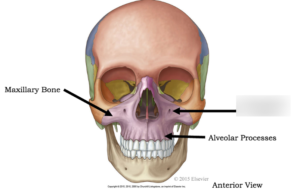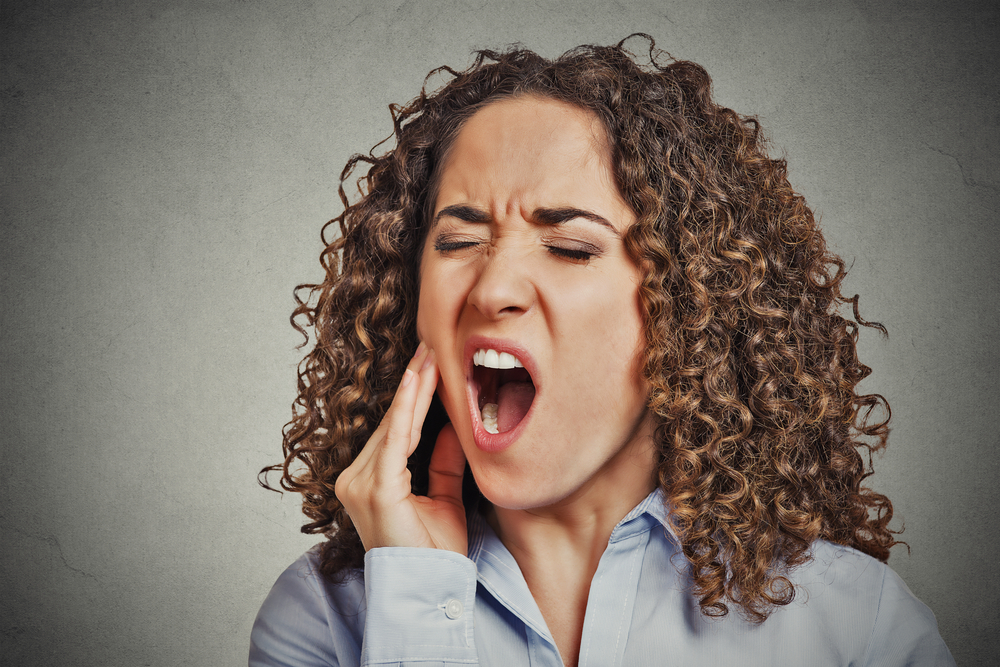Although maxillomandibular surgery is used to improve the structure of the jaw, a handful of orofacial and temporomandibular (TMJ) joint disorders can arise post-surgery. Let's begin by discussing what the surgery is. Afterwards, if you underwent maxillomandibular advancement surgery and are looking for ways to improve your symptoms, look for tips at the end of this article.

Maxillomandibular Advancement Surgery: What is it?
Simply put, maxillomandibular advancement surgery is exactly what it sounds like. The maxilla (maxillary bones, plural) is the bone that governs the upper portion of your teeth and forms part of the nose and eye socket.
The mandible is a bone below the maxilla and is responsible for the lower teeth, as well as the jaw line. It is also one of two bones that form the Temporomandibular joint (TMJ).
Therefore, maxillomandibular advancement surgery involves the fracturing of one or both of these bones, advancing it forward, and fixating the bones in place.
A depiction of the jaw, both (A) Pre- and (B) Post-Maxillomandibular Surgery
This surgery helps those suffering from obstructive sleep apnea. Cosmetic improvements are another common reason for maxillomandibular surgery.
Maxillomandibular Advancement Surgery and TMJ dysfunction
As the jaw anatomy changes, force placed on muscles of mastication (chewing muscles) and the TMJ joint change as well. Although structurally sound, it is not uncommon for post-surgical patients to complain of pain and discomfort in one or both sides of the jaw.
Changes to the myofascial (muscles and fascia) system can contribute to this pain. For example, as the jaw is pulled forward, superficial muscles and fascial connections are forced to adjust. The extra strain along the chin can result in increased resistance through the mandible. This then leads to pain and fatigue along the buccinator, masseter, medial pterygoids and even through the TMJ capsule.
The solution is simple. First, reduce myofascial tension to maximize recovery. Second, reduce pain as the neuromuscular system adjusts to the change. In short, stretching of the TMJ capsule and reducing tight muscles of mastication improves the remaining functional limitation of a now structurally sound jaw.
Other Complications that can result from Maxillomandibular Surgery
There are other complications that can arise from maxillomandibular advancement surgery. For example: facial paranesthesia, mandibular relapse (slippage of mandibular advancement), and rarely, ischemic necrosis (Holty, Guilleminault, 2010). If you experienced any of these symptoms, please visit our contact page so we can discuss your case in more detail.
Struggling with jaw and orofacial pain post Maxillomandibular advancement surgery?
It is not uncommon to experience soreness after your surgery. However, if you are experiencing persistent jaw and/or facial pain after surgery, please reach out to find the next step to reducing symptoms. Dr. Glackin is well versed in both maxillomandibular advancement surgeries and jaw pain and would be happy to assist you.
If you are not in the area or are not comfortable meeting in person, that is okay! Dr. Glackin is happy to discuss your case via Telehealth. This includes an evaluation and self-mobilization strategies to improve your symptoms in the comfort of your own home.
Still unsure if Glackin Physiotherapy is a good fit for you and your needs? There is no need to make an immediate decision. Before we begin, reach out to us via our contact page and tell us your story. We’re happy to listen to your story and help you determine your next steps.
References:
Holty, J. C., Guilleminault, C. (2010). Maxillomandibular advancement for the treatment of obstructive sleep apnea: A systematic review and meta-analysis. Sleep Medicine Reviews, 14(5), 287-297. doi:10.1016/j.smrv.2009.11.003




